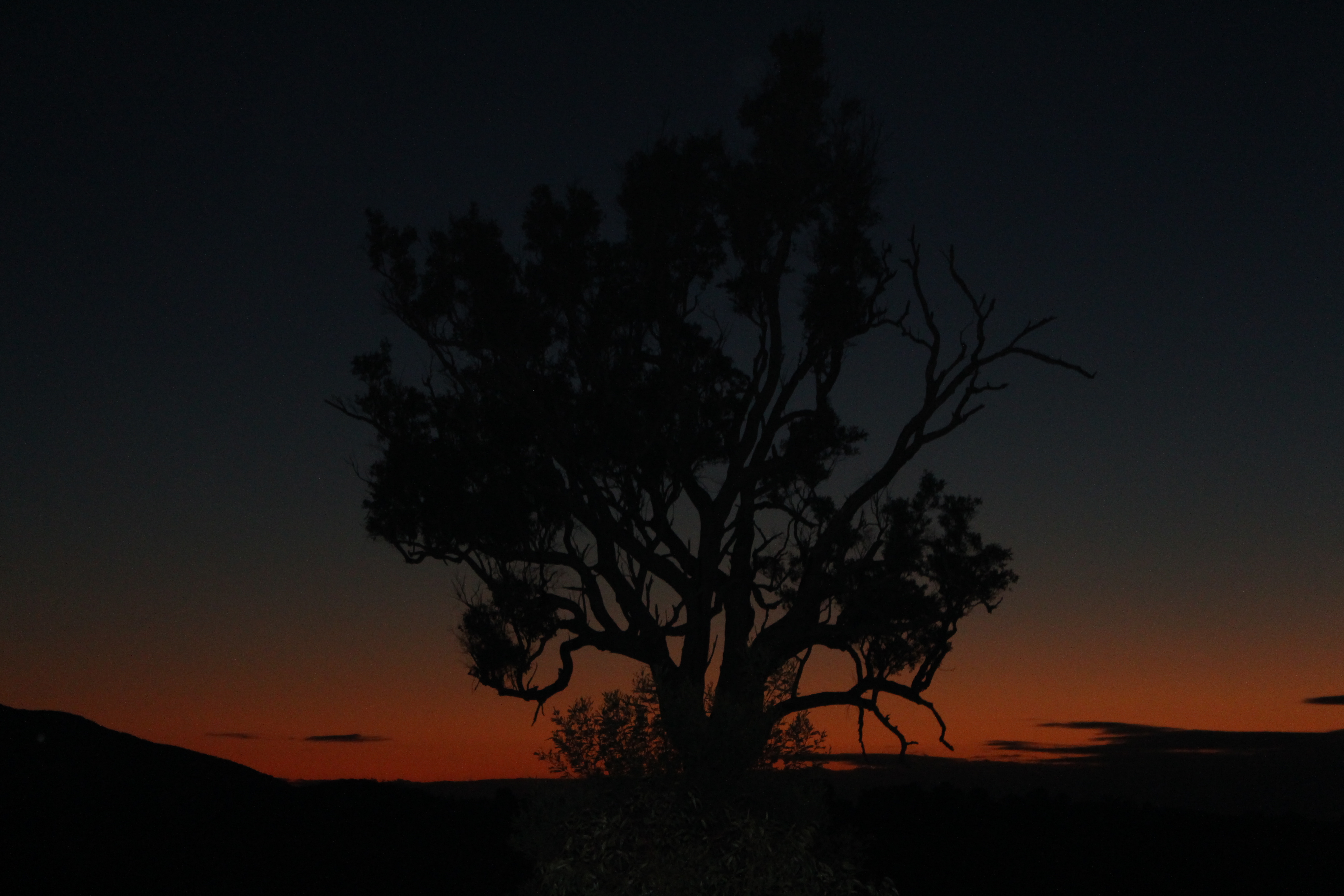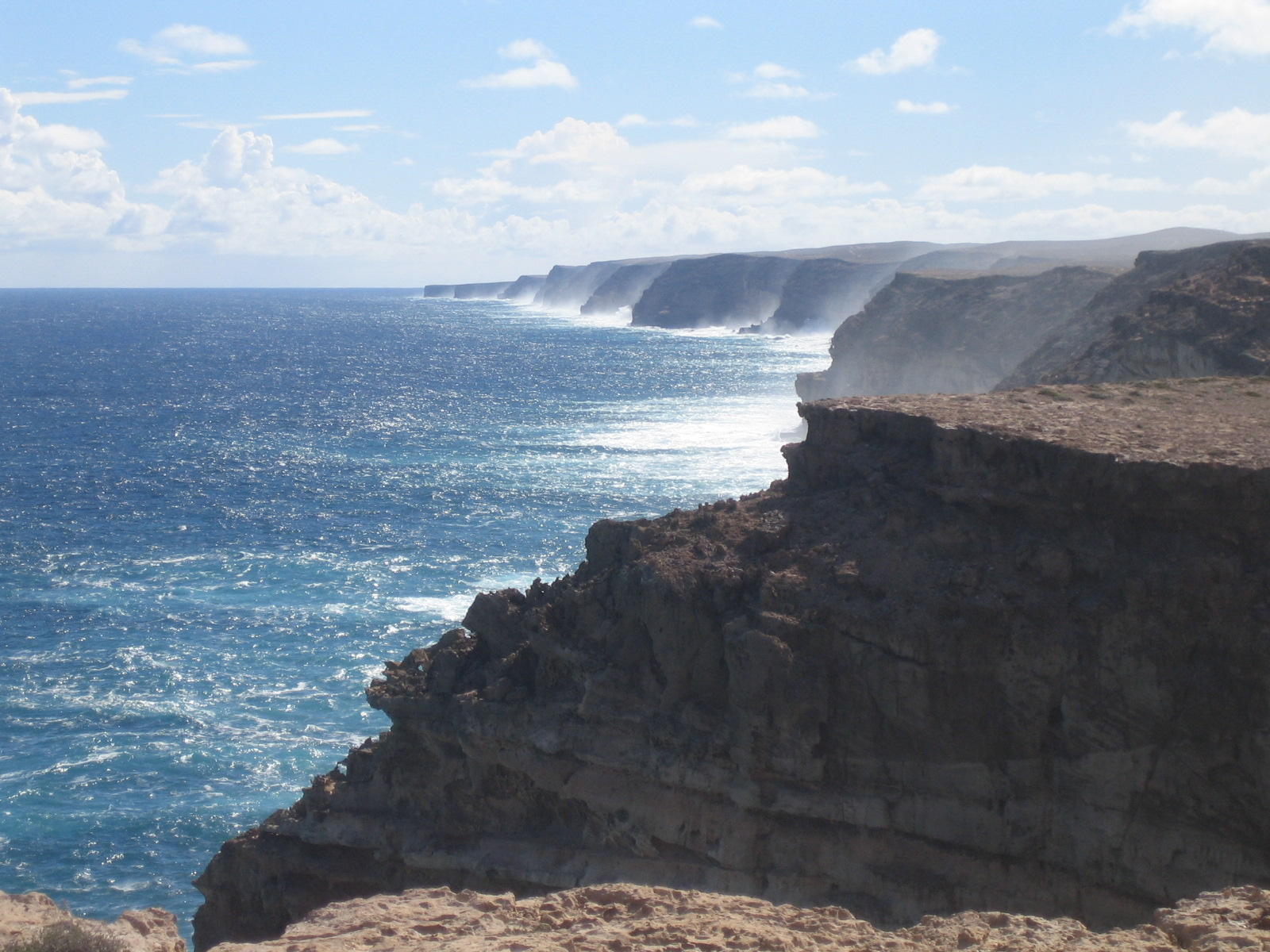|
Eucalyptus Zopherophloia
''Eucalyptus zopherophloia'', commonly known as the blackbutt mallee, is a species of spreading mallee that is endemic to an area on the west coast of Western Australia. It has rough bark over part or all of the trunk, smooth grey bark above, narrow lance-shaped leaves, flower buds in groups of nine or eleven, creamy white flowers and conical fruit. Description ''Eucalyptus zopherophloia'' is a spreading mallee that typically grows to a height of and forms a lignotuber. It has rough, fibrous bark over part or all of the trunks, smooth grey bark above. The adult leaves are arranged alternately, the same shade of dull to slightly glossy light green on both sides, narrow lance-shaped to narrow elliptical, long and wide, tapering to a petiole long. The flower buds are arranged in leaf axils in groups of nine or eleven on an unbranched peduncle long, the individual buds on pedicels long. Mature buds are oval, long and wide with a rounded operculum. Flowering occurs between O ... [...More Info...] [...Related Items...] OR: [Wikipedia] [Google] [Baidu] |
Ian Brooker
Murray Ian Hill Brooker AM (2 June 1934 – 25 June 2016), better known as Ian Brooker, was an Australian botanist. He was widely recognised as the leading authority on the genus ''Eucalyptus''. Ian Brooker was born in Adelaide, South Australia on 2 June 1934. He obtained a B.Ag.Sc. from the University of Adelaide, and a MSc and D.Sc. from the Australian National University in Canberra. He worked with the Soil Conservation Branch of the Department of Agriculture in South Australia from 1957 to 1963; then joined the Department of Botany at the Australian National University until 1969; and then spent a year with the Western Australian Herbarium. In 1970, Brooker joined the Forest Research Institute in Canberra, now part of CSIRO. His research since then has specialised in the genus ''Eucalyptus'', especially its taxonomy. He travelled widely throughout Australia collecting specimens, and published 100 research papers, 180 leaflets, and four books, and is the principal author ... [...More Info...] [...Related Items...] OR: [Wikipedia] [Google] [Baidu] |
Botanical Name
A botanical name is a formal scientific name conforming to the ''International Code of Nomenclature for algae, fungi, and plants'' (ICN) and, if it concerns a plant cultigen, the additional cultivar or Group epithets must conform to the '' International Code of Nomenclature for Cultivated Plants'' (ICNCP). The code of nomenclature covers "all organisms traditionally treated as algae, fungi, or plants, whether fossil or non-fossil, including blue-green algae ( Cyanobacteria), chytrids, oomycetes, slime moulds and photosynthetic protists with their taxonomically related non-photosynthetic groups (but excluding Microsporidia)." The purpose of a formal name is to have a single name that is accepted and used worldwide for a particular plant or plant group. For example, the botanical name '' Bellis perennis'' denotes a plant species which is native to most of the countries of Europe and the Middle East, where it has accumulated various names in many languages. Later, the plant w ... [...More Info...] [...Related Items...] OR: [Wikipedia] [Google] [Baidu] |
Eucalypts Of Western Australia
Eucalypt is a descriptive name for woody plants with capsule fruiting bodies belonging to seven closely related genera (of the tribe Eucalypteae) found across Australasia: ''Eucalyptus'', ''Corymbia'', ''Angophora'', '' Stockwellia'', '' Allosyncarpia'', '' Eucalyptopsis'' and ''Arillastrum''. Taxonomy For an example of changing historical perspectives, in 1991, largely genetic evidence indicated that some prominent ''Eucalyptus'' species were actually more closely related to ''Angophora'' than to other eucalypts; they were accordingly split off into the new genus ''Corymbia''. Although separate, all of these genera and their species are allied and it remains the standard to refer to the members of all seven genera ''Angophora'', ''Corymbia'', ''Eucalyptus'', ''Stockwellia'', ''Allosyncarpia'', ''Eucalyptopsis'' and ''Arillastrum'' as "eucalypts" or as the eucalypt group. The extant genera ''Stockwellia'', ''Allosyncarpia'', ''Eucalyptopsis'' and ''Arillastrum'' comprise six ... [...More Info...] [...Related Items...] OR: [Wikipedia] [Google] [Baidu] |
Plants Described In 1993
Plants are predominantly photosynthetic eukaryotes of the kingdom Plantae. Historically, the plant kingdom encompassed all living things that were not animals, and included algae and fungi; however, all current definitions of Plantae exclude the fungi and some algae, as well as the prokaryotes (the archaea and bacteria). By one definition, plants form the clade Viridiplantae (Latin name for "green plants") which is sister of the Glaucophyta, and consists of the green algae and Embryophyta (land plants). The latter includes the flowering plants, conifers and other gymnosperms, ferns and their allies, hornworts, liverworts, and mosses. Most plants are multicellular organisms. Green plants obtain most of their energy from sunlight via photosynthesis by primary chloroplasts that are derived from endosymbiosis with cyanobacteria. Their chloroplasts contain chlorophylls a and b, which gives them their green color. Some plants are parasitic or mycotrophic and have lost the abili ... [...More Info...] [...Related Items...] OR: [Wikipedia] [Google] [Baidu] |
Myrtales Of Australia
The Myrtales are an order of flowering plants placed as a sister to the eurosids II clade as of the publishing of the ''Eucalyptus grandis'' genome in June 2014. The APG III system of classification for angiosperms still places it within the eurosids. This finding is corroborated by the placement of the Myrtales in the Malvid clade by the One Thousand Plant Transcriptomes Initiative. The following families are included as of APGIII: * Alzateaceae S. A. Graham * Combretaceae R. Br. ( leadwood family) * Crypteroniaceae A. DC. * Lythraceae J. St.-Hil. ( loosestrife and pomegranate family) * Melastomataceae Juss. (including Memecylaceae DC.) * Myrtaceae Juss. (myrtle family; including Heteropyxidaceae Engl. & Gilg, Psiloxylaceae Croizat) * Onagraceae Juss. ( evening primrose and Fuchsia family) * Penaeaceae Sweet ex Guill. (including Oliniaceae Arn., Rhynchocalycaceae L. A. S. Johnson & B. G. Briggs) * Vochysiaceae A. St.-Hil. The Cronquist system gives essentially the same c ... [...More Info...] [...Related Items...] OR: [Wikipedia] [Google] [Baidu] |
Eucalyptus
''Eucalyptus'' () is a genus of over seven hundred species of Flowering plant, flowering trees, shrubs or Mallee (habit), mallees in the Myrtaceae, myrtle Family (biology), family, Myrtaceae. Along with several other genera in the Tribe (biology), tribe Eucalypteae, including ''Corymbia'', they are commonly known as eucalypts. Plants in the genus ''Eucalyptus'' have bark that is either smooth, fibrous, hard or stringy, leaves with oil Gland (botany), glands, and sepals and petals that are fused to form a "cap" or Operculum (botany), operculum over the stamens. The fruit is a woody Capsule (botany), capsule commonly referred to as a "gumnut". Most species of ''Eucalyptus'' are Indigenous (ecology), native to Australia, and every state and territory has representative species. About three-quarters of Australian forests are eucalypt forests. Wildfire is a feature of the Australian landscape and many eucalypt species are adapted to fire, and resprout after fire or have seeds which sur ... [...More Info...] [...Related Items...] OR: [Wikipedia] [Google] [Baidu] |
List Of Eucalyptus Species
The following is an alphabetical list of ''Eucalyptus'' species accepted by the Australian Plant Census as at February 2019. Several species only occurring outside Australia, including '' E. orophila'', '' E. urophylla'' and '' E. wetarensis'' are listed at the World Checklist of Selected Plant Families. A * '' Eucalyptus abdita'' Brooker & Hopper * ''Eucalyptus absita'' Grayling & Brooker – Badgingarra box * '' Eucalyptus acaciiformis'' H.Deane & Maiden – wattle-leaved peppermint * ''Eucalyptus accedens'' W.Fitzg. – powderbark wandoo * '' Eucalyptus acies'' Brooker – Woolburnup mallee * ''Eucalyptus acmenoides'' Schauer in W.G.Walpers – white mahogany * '' Eucalyptus acroleuca'' L.A.S.Johnson & K.D.Hill – Lakefield coolibah * '' Eucalyptus adesmophloia'' (Brooker & Hopper) D.Nicolle & M.E.French * '' Eucalyptus aequioperta'' Brooker & Hopper – Welcome Hill gum * ''Eucalyptus agglomerata'' Maiden – blue-leaved stringybark * ''Eucalyptus aggregata'' H.Deane & Ma ... [...More Info...] [...Related Items...] OR: [Wikipedia] [Google] [Baidu] |
Department Of Parks And Wildlife (Western Australia)
The Department of Parks and Wildlife (DPaW) was the department of the Government of Western Australia responsible for managing lands described in the ''Conservation and Land Management Act 1984'' and implementing the state's conservation and environment legislation and regulations. The minister responsible for the department was the Minister for the Environment (Western Australia), Minister for the Environment. History The Department of Environment and Conservation (Western Australia), Department of Environment and Conservation (DEC) was separated on 30 June 2013, forming the Department of Parks and Wildlife (DPaW) and the Department of Environment Regulation (DER), both of which commenced operations on 1 July 2013. DPaW focused on managing multiple use state forests, national parks, marine parks and reserves. DER focused on environmental regulation, approvals and appeals processes, and pollution prevention. It was announced on 28 April 2017 that the Department of Parks and Wi ... [...More Info...] [...Related Items...] OR: [Wikipedia] [Google] [Baidu] |
Declared Rare And Priority Flora List
The Declared Rare and Priority Flora List is the system by which Western Australia's conservation flora are given a priority. Developed by the Government of Western Australia's Department of Environment and Conservation, it was used extensively within the department, including the Western Australian Herbarium. The herbarium's journal, '' Nuytsia'', which has published over a quarter of the state's conservation taxa, requires a conservation status to be included in all publications of new Western Australian taxa that appear to be rare or endangered. The system defines six levels of priority taxa: ;X: Threatened (Declared Rare Flora) – Presumed Extinct Taxa: These are taxa that are thought to be extinct, either because they have not been collected for over 50 years despite thorough searching, or because all known wild populations have been destroyed. They have been declared as such in accordance with the Wildlife Conservation Act 1950, and are therefore afforded legislative prot ... [...More Info...] [...Related Items...] OR: [Wikipedia] [Google] [Baidu] |
Zuytdorp Cliffs
The Zuytdorp Cliffs extend for about along a rugged, spectacular and little visited segment of the Western Australian Indian Ocean coast. The cliffs extend from just south of the mouth of the Murchison River at Kalbarri, to Pepper Point south of Steep Point. The cliffs are situated in both the Gascoyne and Mid West regions of the state. At the highest point, near Womerangee Hill, the top of the cliffs are above the sea. They are named after a trading ship of the Dutch East India Company, the ''Zuytdorp'', that was wrecked against the cliffs in 1712. Geology The Zuytdorp Cliffs are composed of Pleistocene aged limestone, a formation called the Tamala Limestone. This limestone formed by the cementation of ancient calcareous sand dunes that accumulated near the coast during episodes of the last ice age. It has been inferred that the relatively straight edge of the cliffs is due to a major fault line just off shore.Hearty, Paul J & O'Leary, Michael J (2008-02-01). Carbonate e ... [...More Info...] [...Related Items...] OR: [Wikipedia] [Google] [Baidu] |
Jurien Bay, Western Australia
Jurien Bay is a coastal town in the Wheatbelt region of Western Australia, north of Perth facing the Indian Ocean. History The coastline around Jurien Bay was first known to Europeans in the 17th century. In 1801–03, an expedition under the command of Nicolas Baudin sailed along the Western Australian coast. Louis de Freycinet, a cartographic surveyor on the expedition, named Jurien Bay after Charles Marie Jurien (1763–1836) of the French naval administration. The area was visited by a number of English explorers from 1822 onwards. The bay was first surveyed by Captain James Harding, the harbourmaster of Fremantle, in 1865, with a more extensive survey made by Staff Commander W. E. Archdeacon R.N. in 1875. The first settlement was established in the mid-1850s by Walter Padbury. A jetty was constructed in 1885–87 due to the success of pastoralism. In the early 1900s, a temporary fishing village was built around the Jurien jetty and the coastal waters were used for catch ... [...More Info...] [...Related Items...] OR: [Wikipedia] [Google] [Baidu] |
.jpg)




